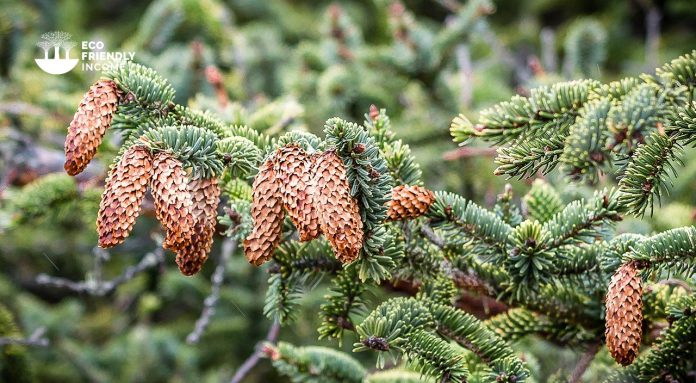A field guide on how to identify and propagate Sitka Spruce (Picea sitchensis), a fast-growing tree that is native to the west coast of North America.
How to Identify Sitka Spruce (Picea sitchensis)
Leaves
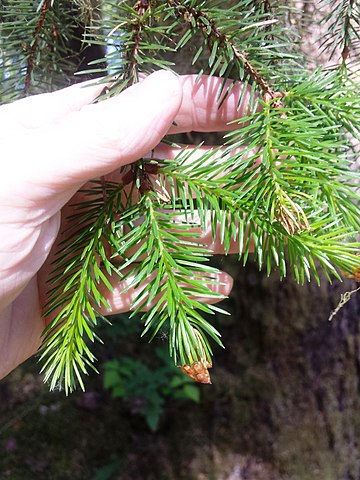
Sitka spruce leaves are needle-like, linear-shaped, and have entire margins (smooth). They grow on the stems in a spiral arrangement.
If you take a close look at Picea sitchensis needles, compared to other spruce trees, they are more flattened.
Bark
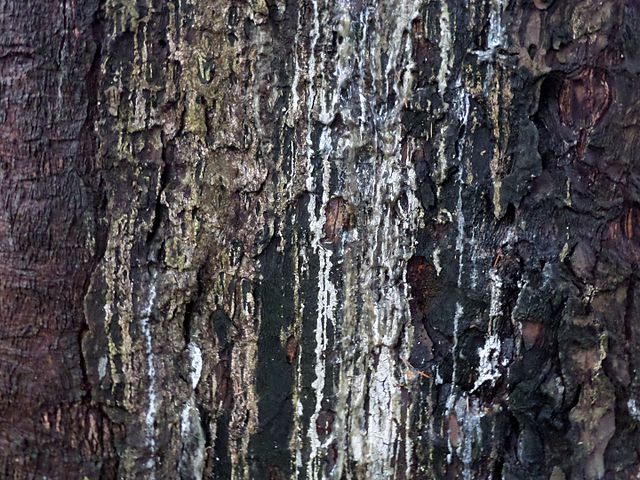
Sitka spruce tree bark is typically thin, grayish-brown, and scaly.
It is often covered in small, raised bumps that have a rough texture. The bark has a papery consistency and can easily be peeled off in thin sheets.
The inner bark is yellowish-white in color and is fibrous.
Cones
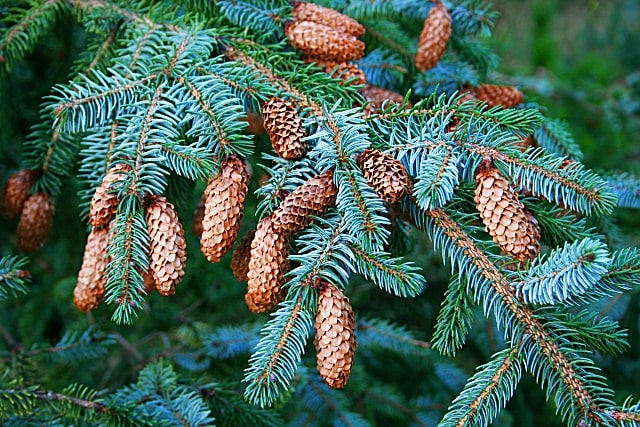
Sitka spruce cones are typically 1-3 inches in length. They are a light brown color and have thin scales that are tightly arranged.
They have a pointed tip and a narrow base, and their scales are usually slightly curved.
The cones can remain closed and be on the trees for several years before opening.
Flowering Season
Sitka spruce cones generally appear from spring to early summer and mature by the end of summer and fall.
Habitat
Sitka spruce is commonly found in coastal forests, mainly in the Pacific Northwest region of North America.
You can find them in the following ecoregions:
- Northern Pacific Coastal Forests
- Cook Inlet
- Alaska Peninsula Montane Taiga
It typically grows in humid, moist environments and prefers cool climates.
You could spot Sitka spruces in a variety of habitats, from coastal rainforests to more open coniferous forests. In coastal areas, it is often found near the edge of the forest, growing in full sun or partial shade and in moist, well-drained soils.
Inland, Sitka spruce is more common in the understory of coniferous forests, often growing in full shade with moist, acidic soils.
Wildlife Value
Sitka Spruce is highly valued for its wildlife value in a variety of ways.
It provides important habitat for many species of birds, including bald eagles, pileated woodpeckers, and northern goshawks, as well as mammals like black bears, bobcats, and deer.
Its thick canopy provides shade and shelter during hot summer days.
Additionally, you could use the strong wood of the Sitka spruce to build nest boxes, which work great to attract cavity-nesting birds such as wood ducks and bluebirds.
How to Propagate Sitka Spruce (Picea sitchensis)

Hardiness Zone: 7-8

Soil Type: Clay, loam, sand.

Water: Normal.

Exposure: Full Sun to Partial Shade.
There are two capable techniques you can use if you want to propagate Sitka spruce:
- By Seed: This will guarantee you a higher rate of success but will require more time for established plants.
- By Cutting: This will be harder to succeed but will provide you with established plants faster.
Both techniques are worth a shot, Sitka spruce cones aren’t always easy to get since they often appear at the crown of the tree.
And cuttings can be successful with the right approach.
Let’s take a look at the options:
How to Propagate Sitka Spruce (Picea sitchensis) by Seed
If you have access to Sitka spruces near you, it’s a great idea to harvest some cones to propagate them by seed.
If you can’t find any trees growing nearby, you can always order Sitka spruce seeds online at TreeHelp.
Now if you do find some, harvesting the seeds are pretty simple, let’s take a look:
How to Harvest Seeds
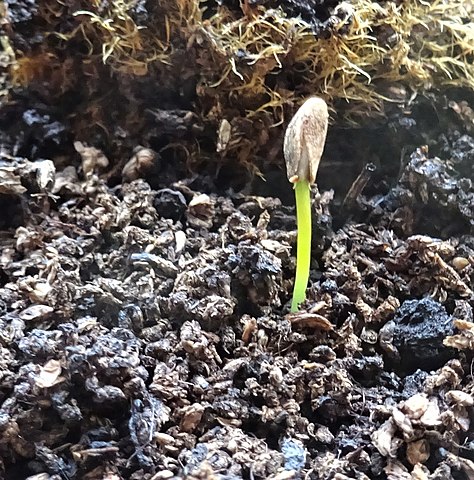
To harvest Sitka spruce seeds from the cones, all you need to do is get mature cones and place them in a brown paper bag to dry.
While they dry, the cones will open up to a point where you can just knock the seeds out of the cones.
The next step will be to break their dormancy.
Stratification
Sitka spruce seeds could even germinate without cold stratification, but you will have better success if you stratify.
Here’s how:
- First, place the seeds in a ziplock bag, add a bit of sand or vermiculite, moisten, then tag the bag with the name and date.
- Next, place the seed bag in the freezer for 20 days.
- After that, take them out of the freezer, and put them into room temperature water for 12 hours.
- Finally, place them into your refrigerator for another 10 days.
Sow the seeds in peat moss and sand mix, water gently, and cover with plastic wrap to maintain moisture.
Seeds should germinate within a week.
How to Propagate Sitka Spruce (Picea sitchensis) by Cuttings
Now if you want established trees faster, taking semi-hardwood cuttings can be a great option.
First, when you take semi-hardwood cuttings for spruce, you wanna cut them when the tree is dormant.
That’s anywhere from late fall to the end of winter.
Very important: Take your cuttings only from young, healthy plants. Older trees lose their ability to regenerate over the years. Good trees to take cuttings from are about 3-4 years old.
Here’s how to do it:
- Cut spruce shoots with secateurs at an angle. Each cutting should be 2-4 inches.
- Place them in a ziplock bag for transport.
- At home, water the tips, pat them dry then dip the ends in rooting hormone.
- Fill some seedling contains (Plantek 81f is recommended) with soil.
- Poke holes, and plant each individual cutting, be careful not to remove the rooting hormones.
- Moisturize your rooting medium regularly.
Recommended rooting medium: Peat & vermiculite mix.
All in all, Sitka spruce cuttings should root within 6-8 weeks.
Careful not to overwater, the cutting would rot before they can make roots.
The key here is having a soil mix with high water retention, and a good ability for gas exchange. That’s why peat mixed with minerals like perlite or vermiculite does a great job.
Tip: Make sure your seedling container drain well.
Good luck with your cuttings!
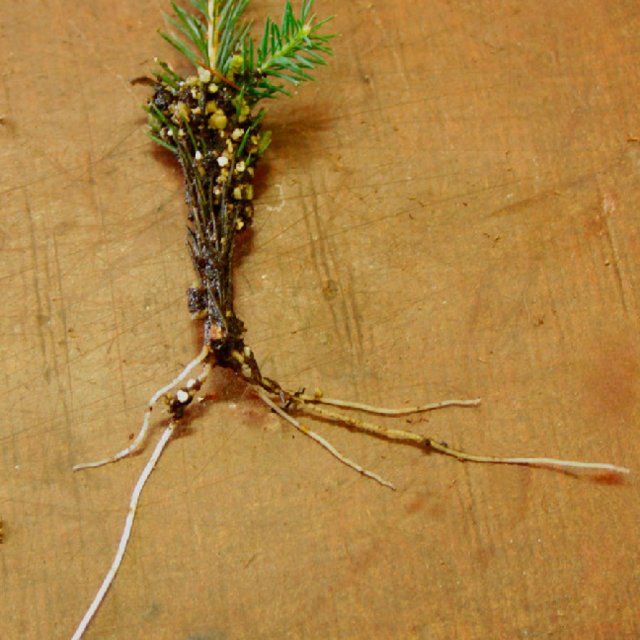
FAQ
Q: Is Sitka spruce native to BC?
A: Yes, it is strongly associated with the BC coast and usually only grows in areas with warmer coastal climates.
Q: Is Sitka spruce invasive?
A: It depends where you live, if you’re in the UK, then it’s definitely not a native plant. Sitka Spruce is native to western North America and was brought to Uk in the 1800s.
Q: How fast does Sitka spruce grow?
A: Established Sitka spruce can grow up to 1.5m (60 inches) per year, which makes them hard to age at first sight.

